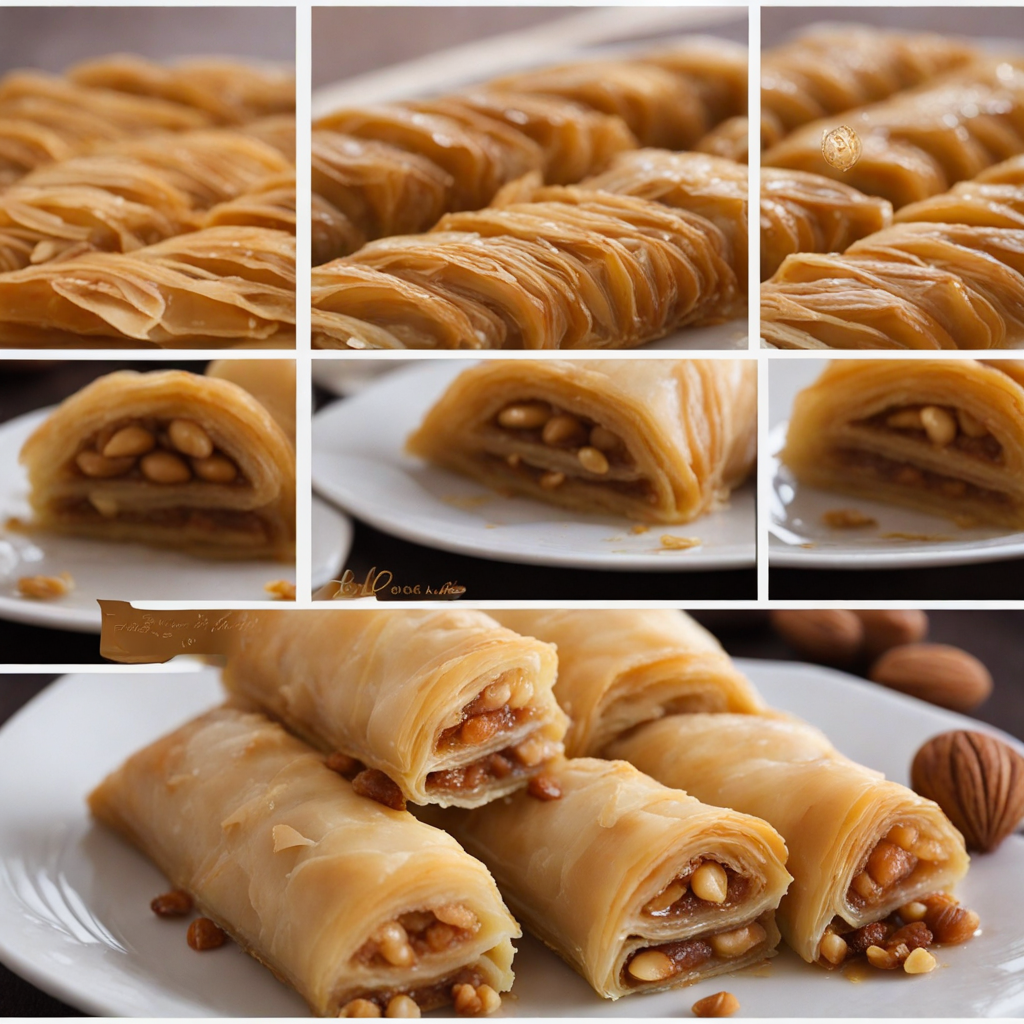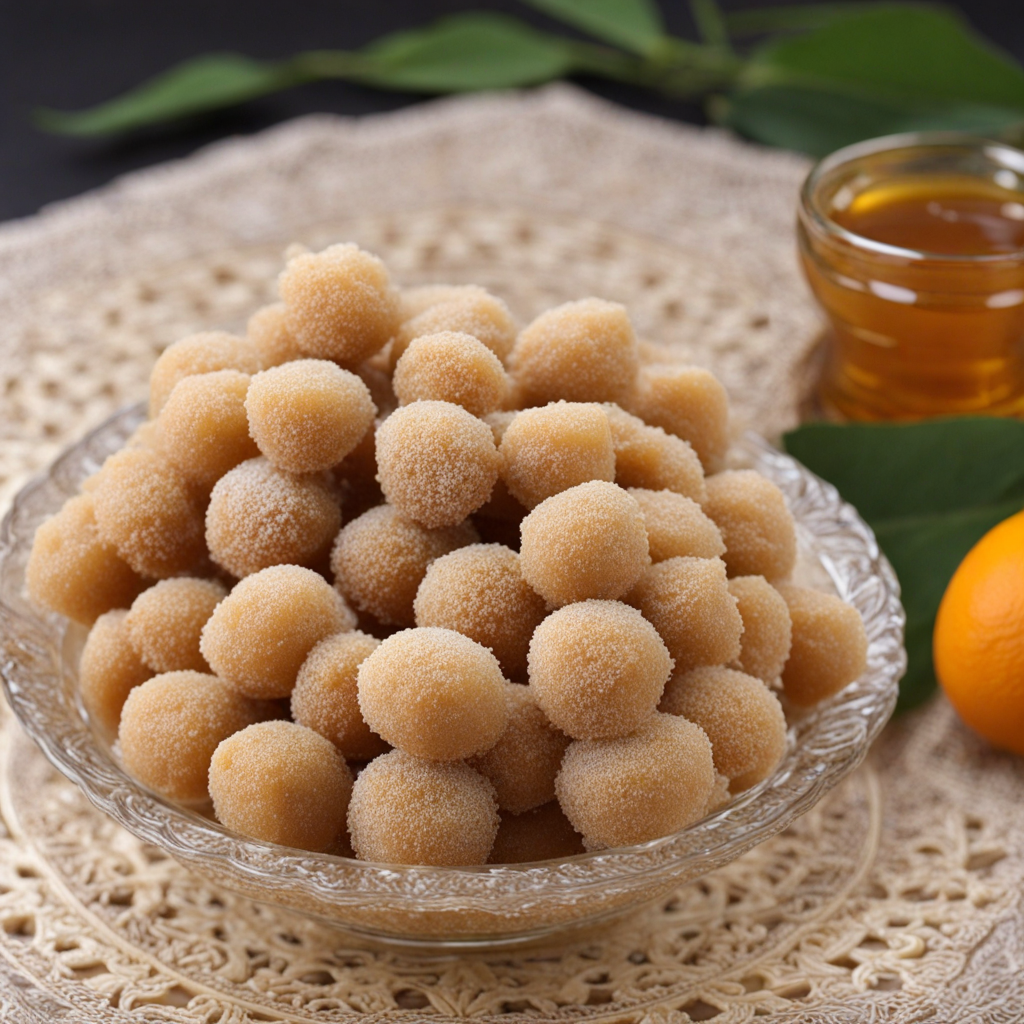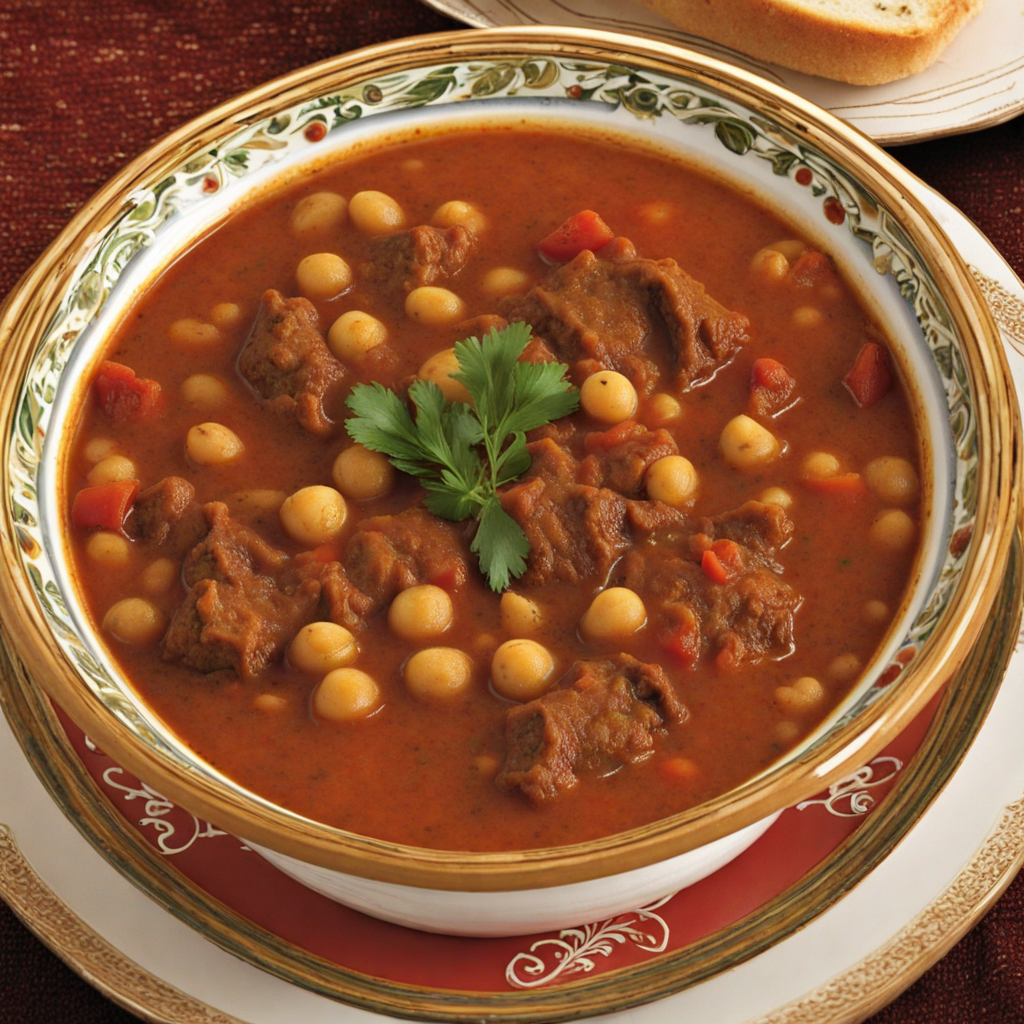Baklawa
Baklawa is a delightful pastry that embodies the rich culinary heritage of Libya, known for its intricate layers and irresistible sweetness. Made from thin sheets of dough called phyllo, baklawa is typically filled with a mixture of finely chopped nuts, such as pistachios, walnuts, or almonds, and generously sweetened with honey or syrup. The layers are meticulously assembled, brushed with melted butter, and then baked to a golden perfection, resulting in a flaky and crisp exterior that gives way to a luscious, nutty filling. Once baked, the baklawa is drenched in a fragrant syrup made from sugar, water, and often flavored with rosewater or orange blossom, enhancing its sweetness and adding a floral aroma. The syrup seeps into the layers, creating a moist and tender texture while preserving the crunchiness of the phyllo. Each bite offers a symphony of flavors and textures, with the buttery crunch of the pastry contrasting beautifully with the rich, earthy notes of the nuts and the syrup's sweetness. Baklawa is not just a dessert; it is a symbol of celebration and hospitality in Libyan culture, often served during festive occasions, family gatherings, and special events. Its elegant presentation and indulgent taste make it a popular choice for sharing with loved ones. Whether enjoyed with a cup of mint tea or as a standalone treat, baklawa promises a unique and memorable taste experience that reflects the heart and soul of Libyan cuisine.
How It Became This Dish
The Sweet Legacy of Baklava: A Libyan Perspective Baklava, known in Libya as "بقلاوة" (pronounced "baqlawa"), is a beloved pastry that embodies the rich tapestry of cultural influences and historical nuances of the region. Though many associate this sweet treat with Turkish or Middle Eastern origins, its roots stretch back to ancient civilizations, intertwining with the history of Libya itself. Origins of Baklava The origins of baklava are often debated, with various regions claiming to be its birthplace. Some historians trace its ancestry to the Assyrians, who are thought to have created a layered bread made with nuts and honey as early as the 8th century BCE. Others suggest that the Greeks took this concept and refined it, leading to the creation of a dessert resembling modern baklava by the 5th century BCE. The use of phyllo dough, a crucial element of baklava, is often attributed to the Ottoman Empire, which played a significant role in its evolution. Libya, located at the crossroads of Africa and the Mediterranean, has long been a melting pot of cultures, including Berber, Arab, and Italian influences. As a result, traditional Libyan baklava has absorbed elements from these diverse traditions, evolving into a unique culinary expression. The introduction of sugarcane from Egypt and the use of local nuts, such as almonds and walnuts, contributed to the distinctive flavors of Libyan baklava. Cultural Significance In Libya, baklava is more than just a dessert; it is a symbol of hospitality and celebration. The preparation and sharing of baklava often signal important occasions such as weddings, religious holidays, and family gatherings. During Ramadan, the holy month of fasting, baklava frequently graces the iftar table, marking the end of daily fasts with its rich sweetness. The art of making baklava is traditionally passed down through generations, with each family often holding its own recipe and special techniques. This transmission of knowledge underscores the importance of baklava in Libyan culture as a means of fostering family bonds and preserving heritage. The communal aspect of enjoying baklava is also significant—large trays of the pastry are often prepared and shared among extended families and friends, reinforcing social ties. The Composition of Libyan Baklava While the basic components of baklava remain consistent—phyllo dough, nuts, butter, and syrup—Libyan baklava has its unique characteristics. The use of finely ground pistachios, almonds, or walnuts is common, and the nut filling often includes spices such as cinnamon or cloves, which add depth to the flavor. The syrup, made from honey, sugar, and a hint of lemon or rosewater, is generously poured over the baked layers, creating a sticky and sweet finish. The preparation of baklava is a labor-intensive process. It begins with rolling out the delicate phyllo dough, which must be layered meticulously with melted butter and nut filling. Once assembled, the baklava is cut into diamond or square shapes before being baked to a golden brown. The final touch, a warm syrup drizzled over the pastry, is crucial, as it seeps into the layers, enhancing the flavor and creating the signature moistness. Historical Development Throughout history, Libya's geographic location has made it a crossroads for trade, migration, and cultural exchange. The influence of the Ottoman Empire, which ruled over Libya for several centuries, was particularly significant in shaping culinary practices, including the preparation of baklava. The Ottomans refined the dessert and elevated it to an art form, introducing new techniques and ingredients that would later be incorporated into Libyan cooking. In the 19th and early 20th centuries, as Libya underwent significant political changes and colonial influences—most notably the Italian occupation—baklava continued to adapt. Italian culinary influences introduced new flavors and presentation styles, which blended seamlessly with traditional Libyan practices. This fusion resulted in variations of baklava that reflect the diverse cultural heritage of the region. After Libya gained independence in 1951, a renewed sense of national identity emerged, and traditional foods like baklava regained prominence as symbols of cultural pride. The rise of local bakeries and patisseries across the country made baklava more accessible to the general public, and it became a staple in both urban and rural households. In contemporary Libya, baklava remains a beloved dessert that is not only prepared at home but also commercially produced. Bakeries showcase an array of baklava varieties, often experimenting with new fillings and flavor profiles, while still honoring traditional methods. The dessert has transcended its original context, becoming popular not just in Libya but also among the Libyan diaspora around the world, where it serves as a reminder of home and heritage. Modern Interpretations and Global Influence Today, baklava is celebrated globally, recognized as a Middle Eastern delicacy that has found its way into the hearts and homes of many cultures. In Libya, modern interpretations of baklava can be found, with chefs and home cooks alike experimenting with new ingredients, such as chocolate or fruit, while still respecting the traditional roots of the dish. Moreover, the rise of social media and cooking shows has led to a resurgence of interest in traditional Libyan cuisine, including baklava. Younger generations, inspired by digital platforms, are revisiting their culinary heritage, often sharing their own twists on traditional recipes. This evolution reflects a broader trend of cultural revival, where the past is honored while embracing innovation. Conclusion Baklava, or "بقلاوة," is more than just a delightful dessert; it is a reflection of Libya's rich history, cultural diversity, and the enduring importance of family and community. From its ancient origins to its contemporary interpretations, baklava has evolved into a symbol of hospitality and celebration in Libyan culture. As families gather around trays of this sweet pastry, they not only indulge in a delicious treat but also partake in a timeless tradition that binds generations together. The legacy of baklava continues to thrive, proving that food is not just sustenance; it is a vessel of memory, culture, and identity.
You may like
Discover local flavors from Libya







